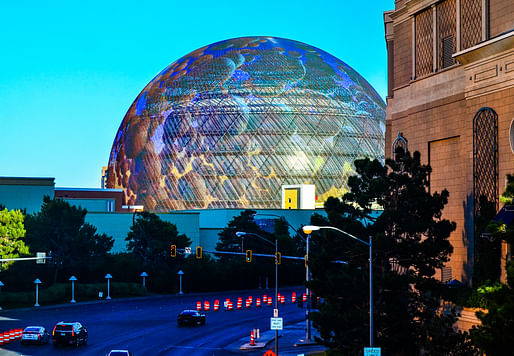

The buzz that followed the recent debut of Populous' $2.3 billion Sphere in Las Vegas has provided one academic at the University of Nevada, Las Vegas with a valuable teaching opportunity to expose students to cutting-edge concepts integral to the future of high-tech spatial experience, urban development, and entertainment design.
“I’m excited to see some of my own students in the master of architecture program, have played a role in things like commissioning of the Sphere as part of their internships, looking at the building system performance,” Associate Professor of Architecture Glenn NP Nowak told the local affiliate KLAS-TV recently. “We have looked at the integration of digital technology, obviously it’s paramount when looking at that, it’s impossible to ignore and it shows that evolution we’ve seen throughout the Strip.”
Nowak serves as the founding director of the UNLV School of Architecture’s 13-year-old Hospitality Design & Entertainment Architecture graduate concentration program. He says Sphere’s presence could trigger a “ripple effect” on the urban environment of the Strip as it enters into its eighth decade of cyclical reinvention. Students were able to make site visits and participate in other aspects of the project's design and construction. Nowak shares that their experience can now be translated into their future professional contributions to the development of the Strip and ongoing revitalization of downtown Las Vegas.
New resorts, hotel, and casino projects in the works from DLR Group and others will further redefine the downtown core as it moves towards what stakeholders hope is a brighter post-pandemic future. Students at Kent State University also enjoy an annual trip to the desert as part of their curricula. The critical community, meanwhile, is slow to issue any praise or takedowns of the technological colossus after it officially opened in July.

“The Las Vegas Strip is a vast petri dish for architectural, and societal, novelty," architect Stefan Al told us for a 2018 feature. “It has a history of innovation in entertainment architecture dating back seventy years. It pioneered the design of unique experiences, even beyond its own wildest dreams, from buildings with the world’s largest atriums to the largest dancing fountains. It gives people what they want, or seduces them into wanting things they didn’t even know existed.”
No Comments
Block this user
Are you sure you want to block this user and hide all related comments throughout the site?
Archinect
This is your first comment on Archinect. Your comment will be visible once approved.